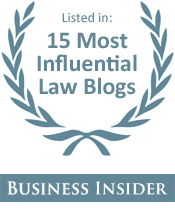Whistleblower Law Blog
DOL ARB Rules that Whistleblowers May Disclose Confidential Employer Information Evidencing Wrongdoing
In Vannoy v. Celanese Corp., the Department of Labor Administrative Review Board (ARB) reversed the Administrative Law Judge’s decision, affirming that whistleblowers are protected when disclosing to the government confidential employer information evidencing wrongdoing.
Whistleblower Matthew Vannoy filed a complaint with the Department of Labor on January 25, 2008, alleging his employer, Celanese Corporation, violated the whistleblower protection provisions of the violated the Sarbanes-Oxley Act (SOX) when placing him on paid administrative leave and subsequently terminating him. Celanese is an international publicly traded company that manufactures and distributes industrial chemicals.
Vannoy noticed potential weaknesses in the company’s credit card reimbursement program and reported those weaknesses internally and to the IRS. Some of the documents Vannoy sent to the IRS included confidential employer information such as employee home addresses and social security numbers.
The ARB held that SOX whistleblowers are not only protected when disclosing information to the SEC or Department of Justice, but they are also protected when making disclosures to the IRS. Applying the Williams standard, the ARB also held that the use of paid administrative leave could constitute an adverse employment action when forced upon a SOX whistleblower. Lastly, the ARB found:
There is a clear tension between a company’s legitimate business policies protecting confidential information and the whistleblower bounty programs created by Congress to encourage whistleblowers to disclose confidential company information in furtherance of enforcement of tax and securities laws. Passage of these bounty provisions demonstrate that Congress intended to encourage federal agencies to seek out and investigate independently procured, non-public information from whistleblowers such as Vannoy to eliminate abuses in the tax realm under the IRS Whistleblower program and now in the securities realm with the SEC Whistleblower program recently enacted in 2010. In 2010, the Dodd-Frank Act established the SEC Investor Protection fund, which is to be used to pay whistleblower claims and is funded with monetary sanctions that the SEC collects in a judicial or administrative action, or through certain disgorgements under the Sarbanes-Oxley Act of 2002. Similar to the IRS Whistleblower bounty program that Vannoy pursued, Section 21F(b) of the Dodd-Frank Act provides that the SEC “shall pay” a whistleblower who voluntarily provides original information to the SEC that leads to the successful enforcement of a covered judicial or administrative action and results in certain monetary sanctions.
Under the SEC bounty program, the whistleblower is entitled to an award of between 10 percent and 30 percent of what the SEC collects in monetary sanctions. However, the whistleblower must provide “original information to the SEC relating to a violation of the securities law.” 15 U.S.C. 78u-6 (b)(1) (emphasis added). The Act defines original information as information that: (i) “is derived from the independent knowledge or analysis of the whistleblower;” (ii) “is not known to the SEC from any other source, unless the whistleblower is the original source of the information;” and (iii) the information “is not derived exclusively from an another allegation contained in a judicial or administrative hearing, in a governmental report, hearig, audit or investigation, or from the news media, unless the whistleblower is a source of the information.” 15 U.S.C. 78u-6(a)(3).
Under the terms of the SEC whistleblower bounty program, Congress anticipated that the whistleblower would provide independently garnered, insider information that would be valuable to the SEC in its investigation. Indeed, the recently issued final rule implementing the SEC bounty program contains a provision prohibiting employers from enforcing or threatening to enforce confidentiality agreements to prevent whistleblower employees from cooperating with the SEC. 17 C.F.R. § 240.21F-17(a).
The IRS whistleblower bounty program Vannoy used, like the SEC program recently established, reflects Congressional recognition of the notable contributions to law enforcement provided by whistleblowers with non public, inside information. Vannoy’s allegations must be viewed in light of these significant enforcement interests. Evidence of record supports Vannoy’s allegations that he procured employee data in 2005 and in 2007 as part of his efforts to facilitate his complaint with the IRS as to Celanese’s accounting practices. In doing so he sent confidential information by e-mail and created compact discs containing confidential information concerning Celanese employees without the company’s permission. Indeed the record shows that some of this information was transferred to a personal computer at Vannoy’s home. See supra at 4. Thus the crucial question for the ALJ to resolve with a hearing on remand is whether the information that Vannoy procured from the company is the kind of “original information” that Congress intended be protected under either the IRS or SEC whistleblower programs, and whether the manner of the transfer of information was protected activity within the scope of SOX. These are mixed questions of law and fact for the ALJ to determine in the first instance.
Tagged: Enforcement Bodies, Internal Revenue Service (IRS), Sarbanes-Oxley Act (SOX), Whistleblower Laws (Federal)



